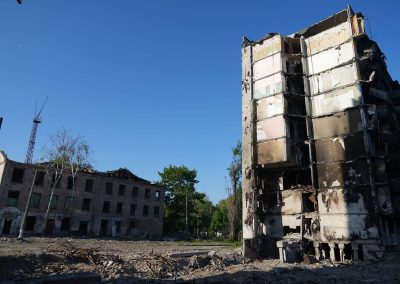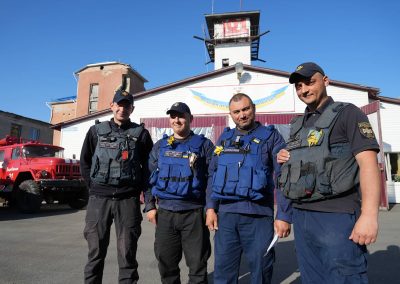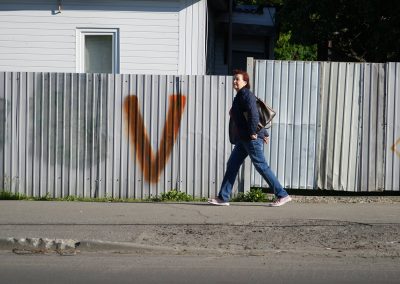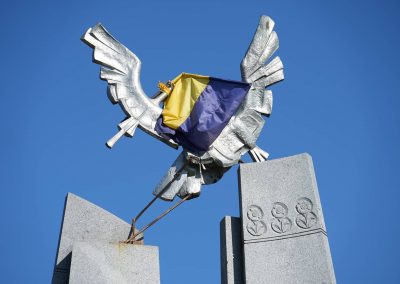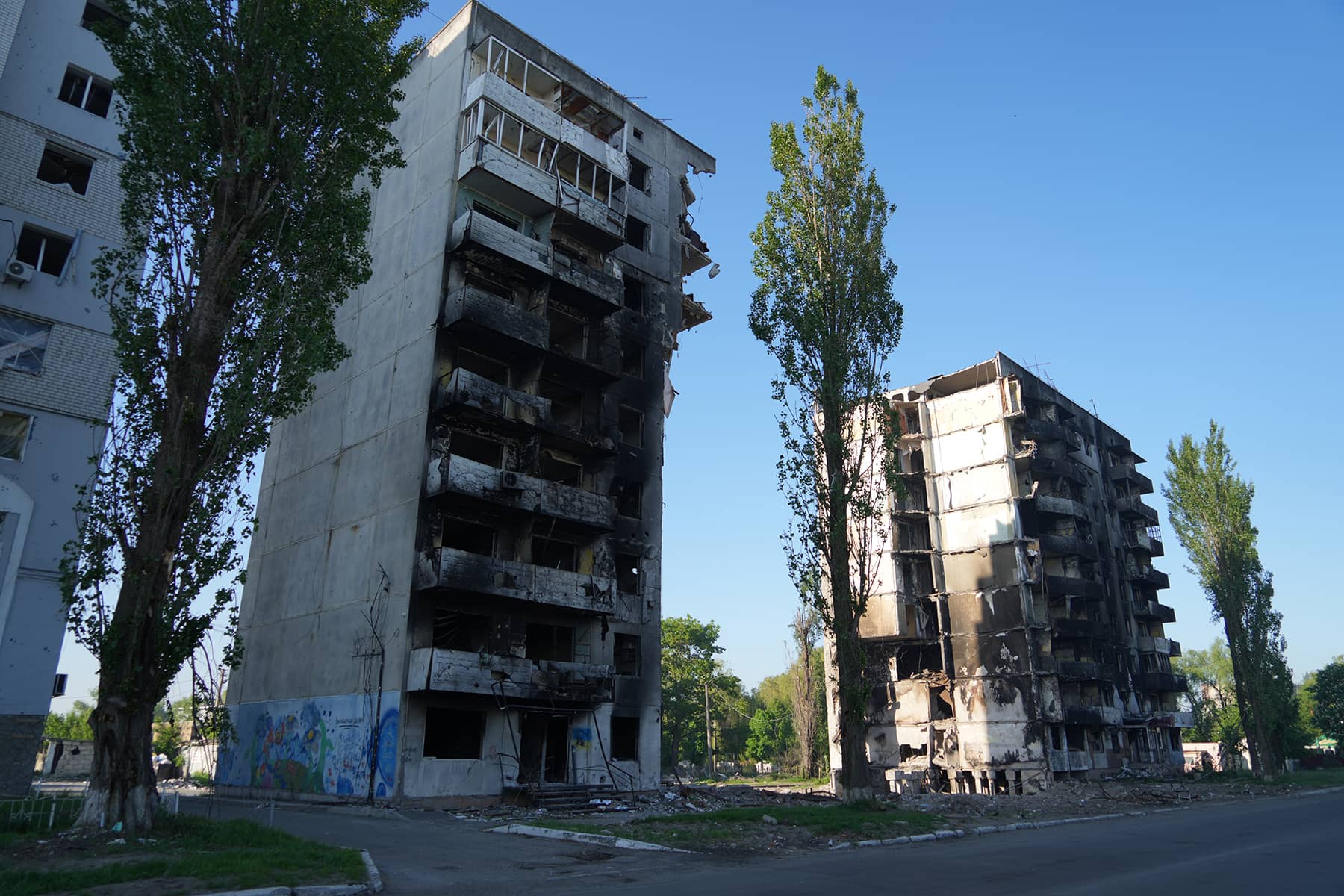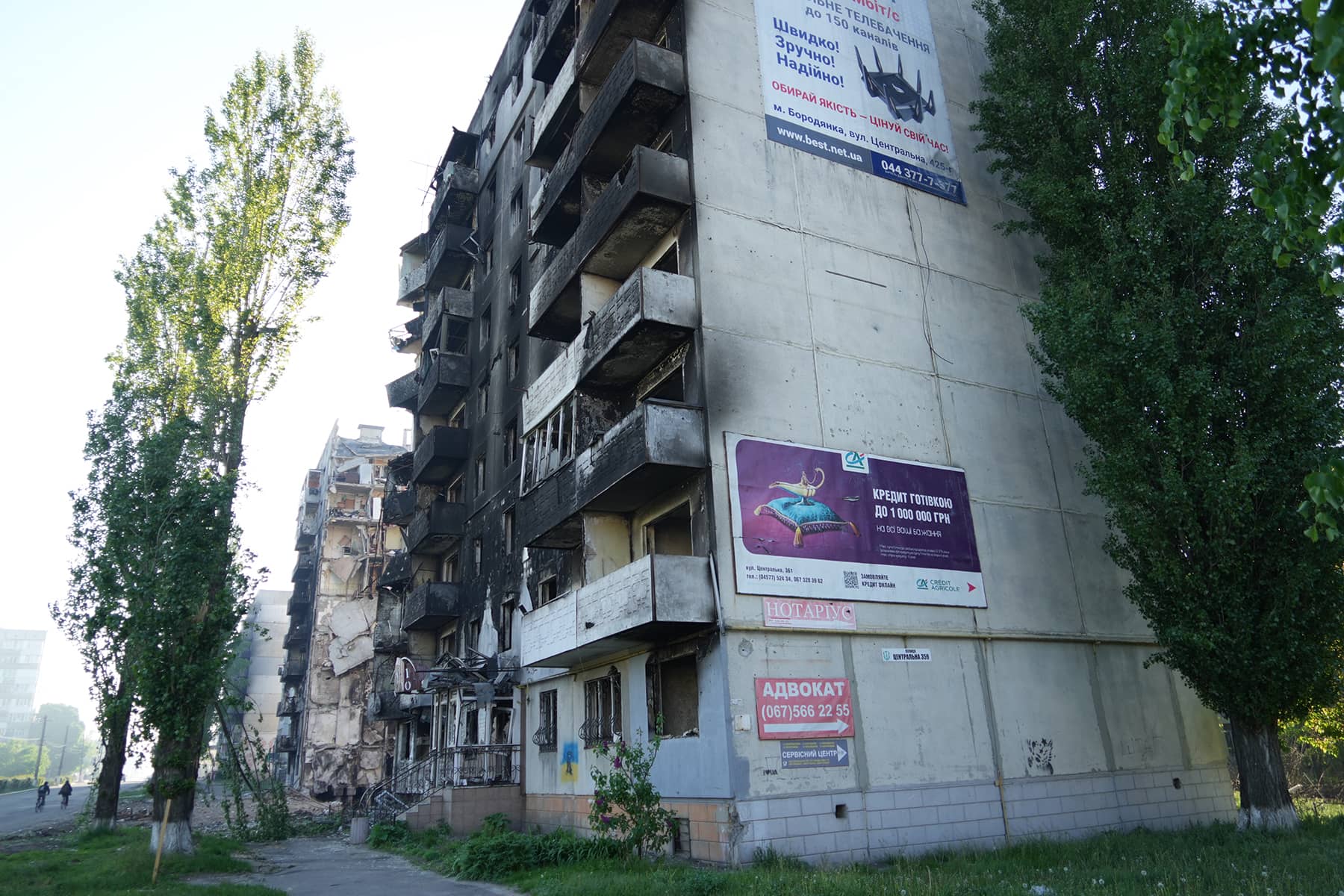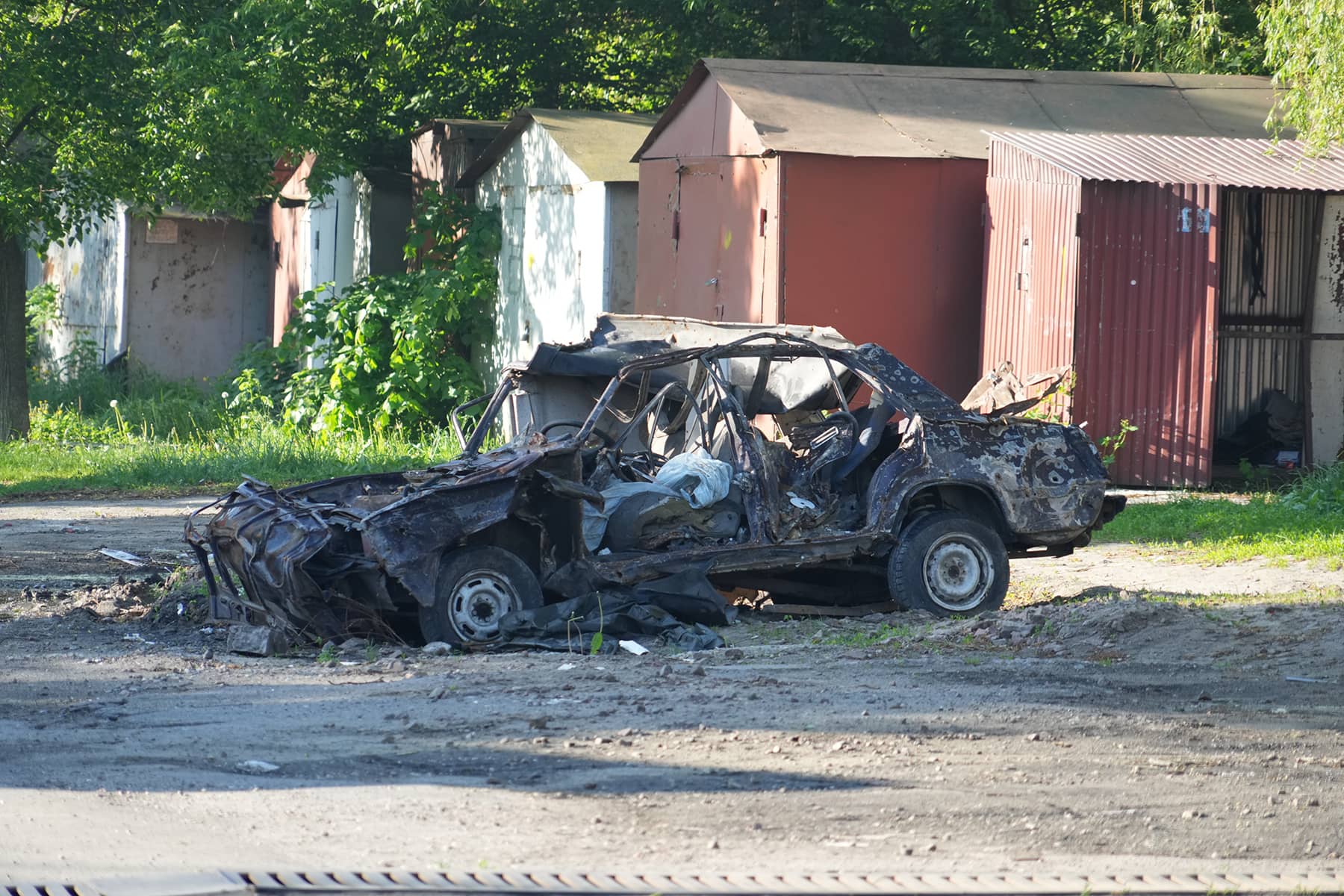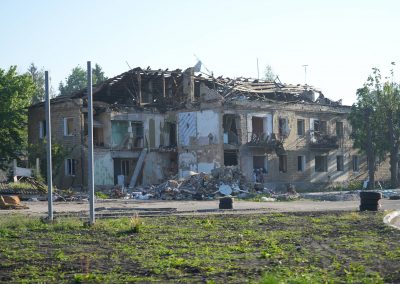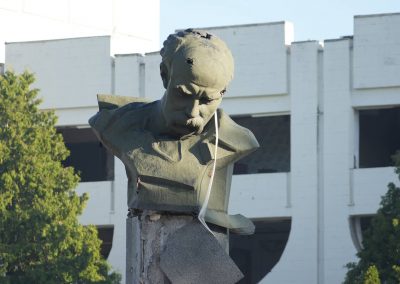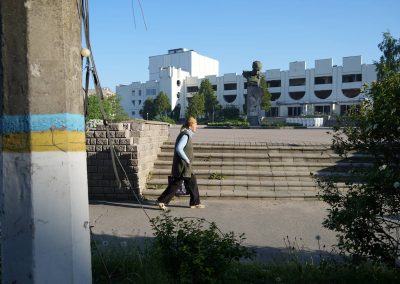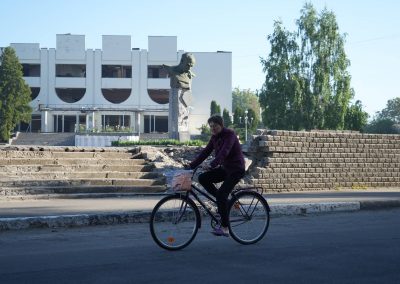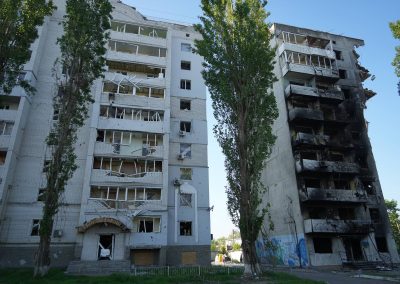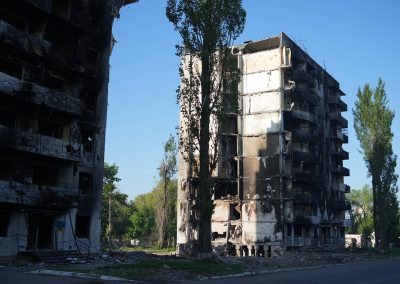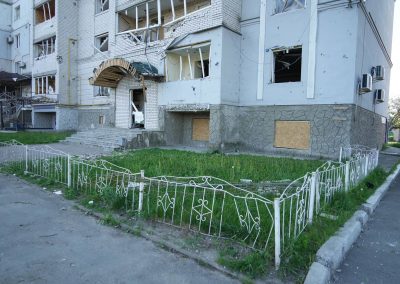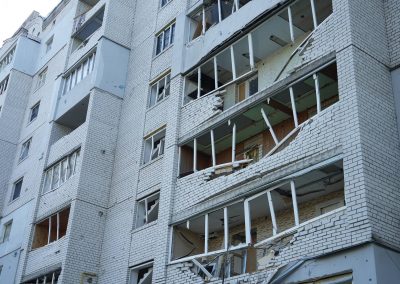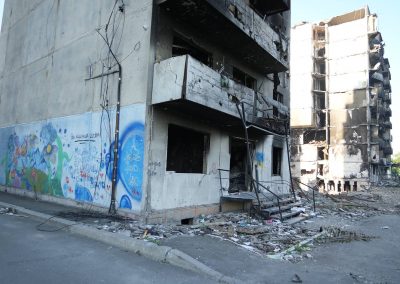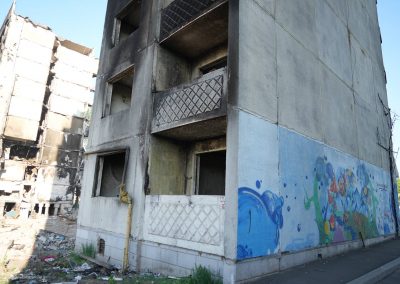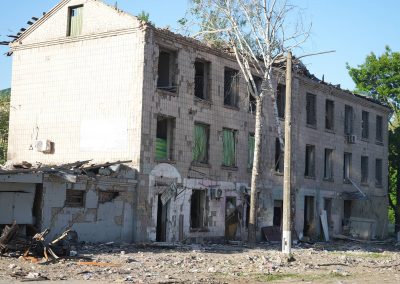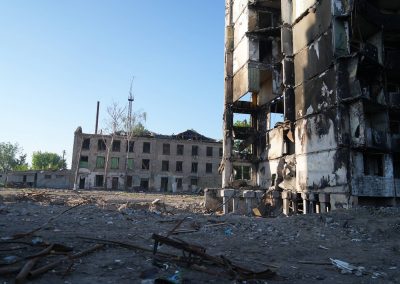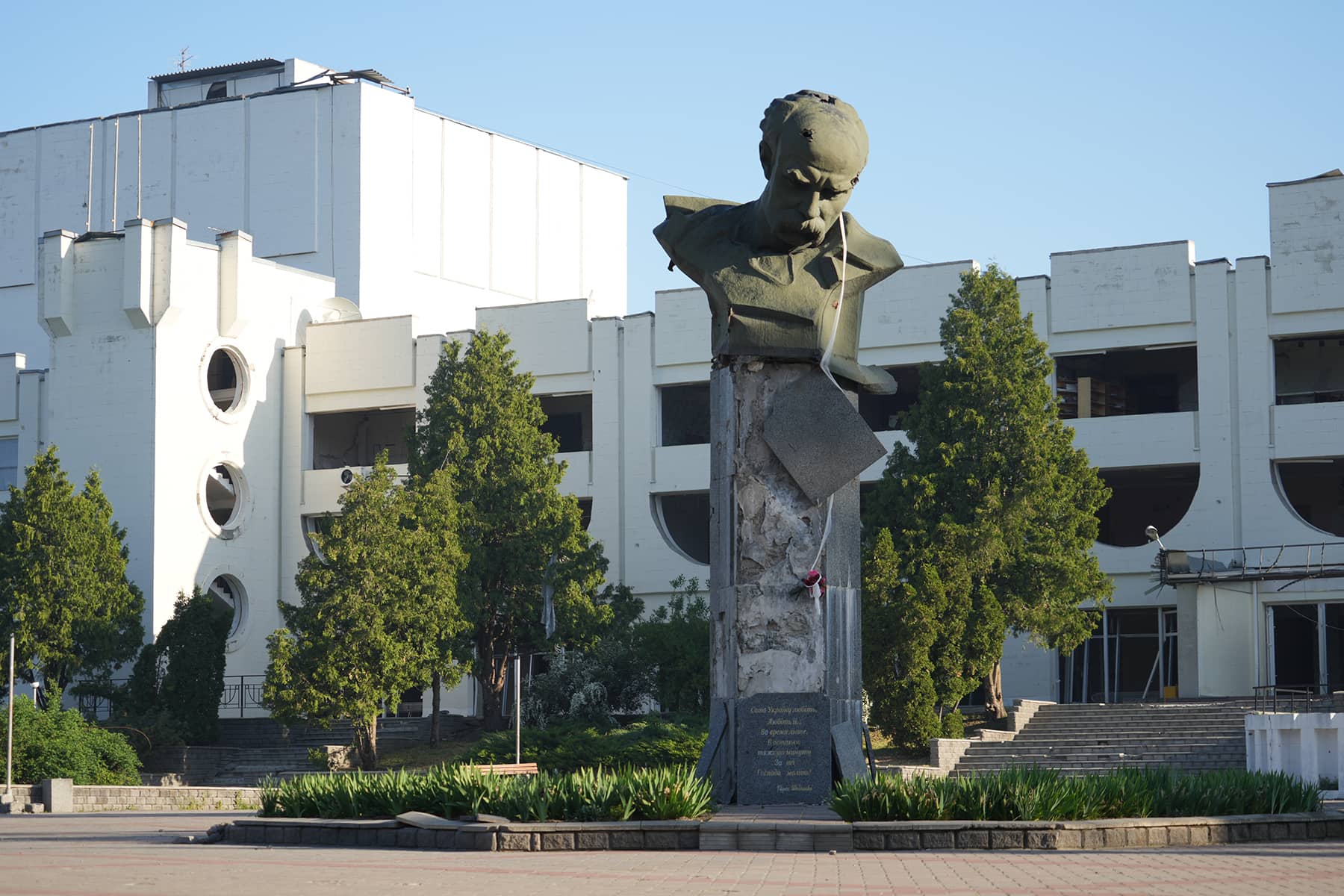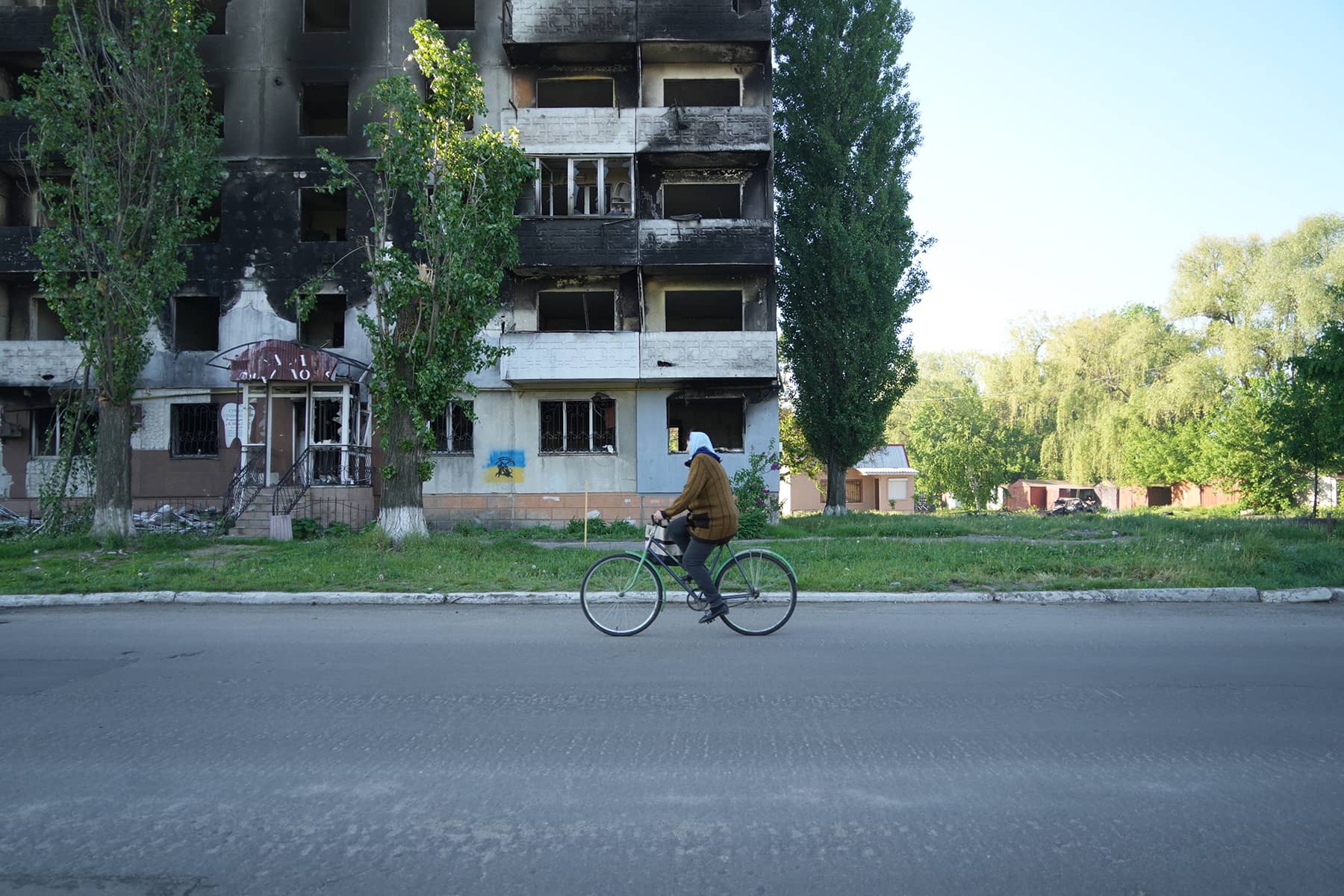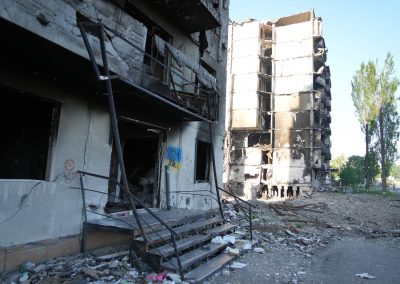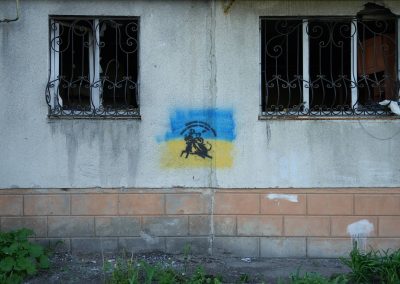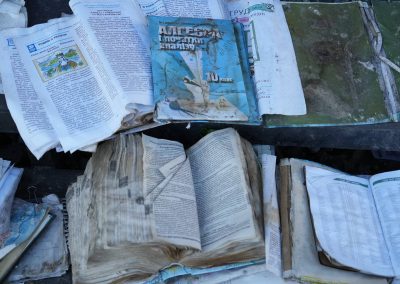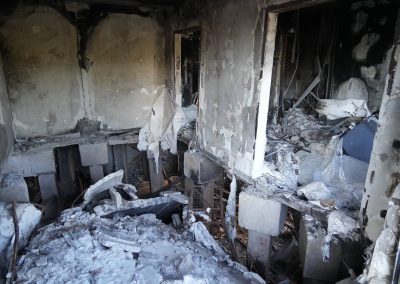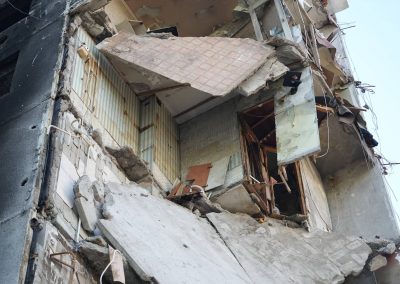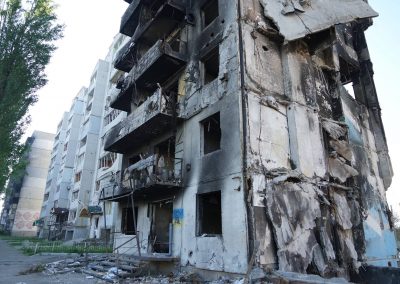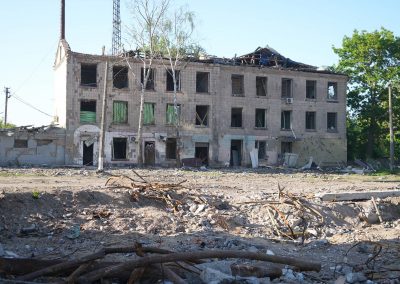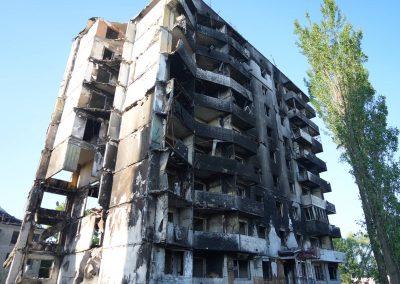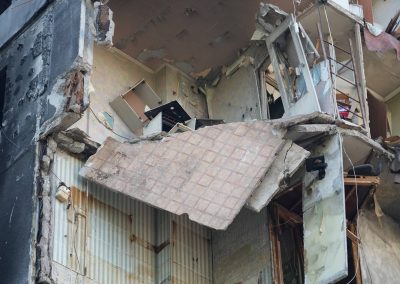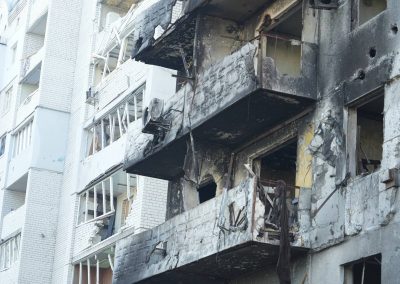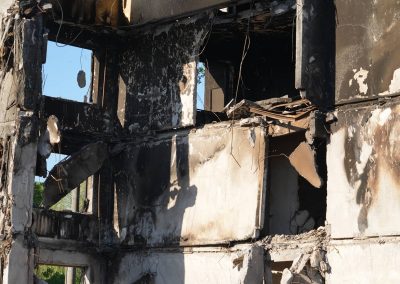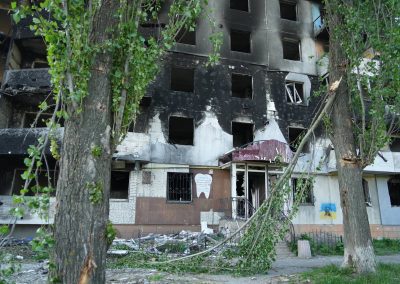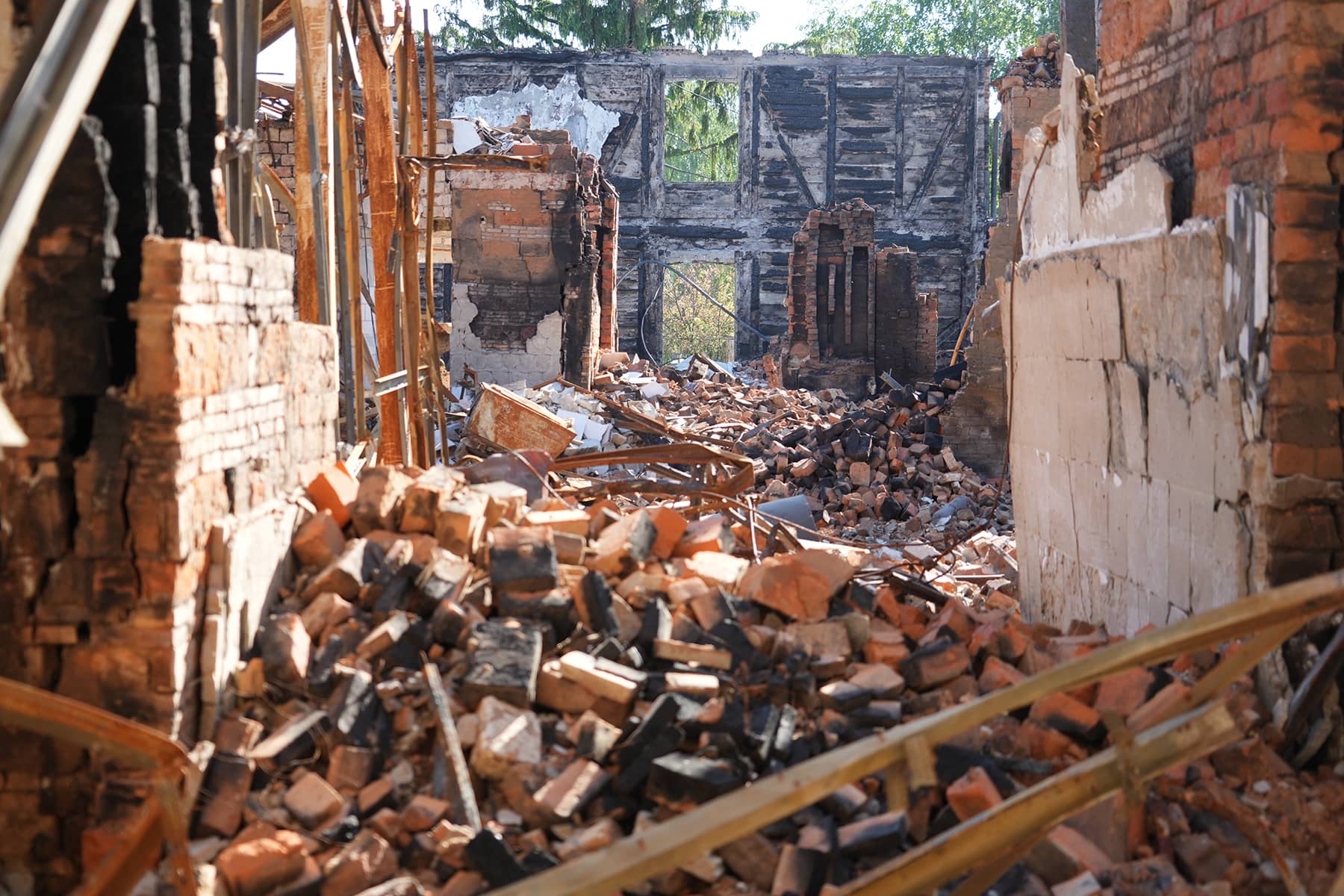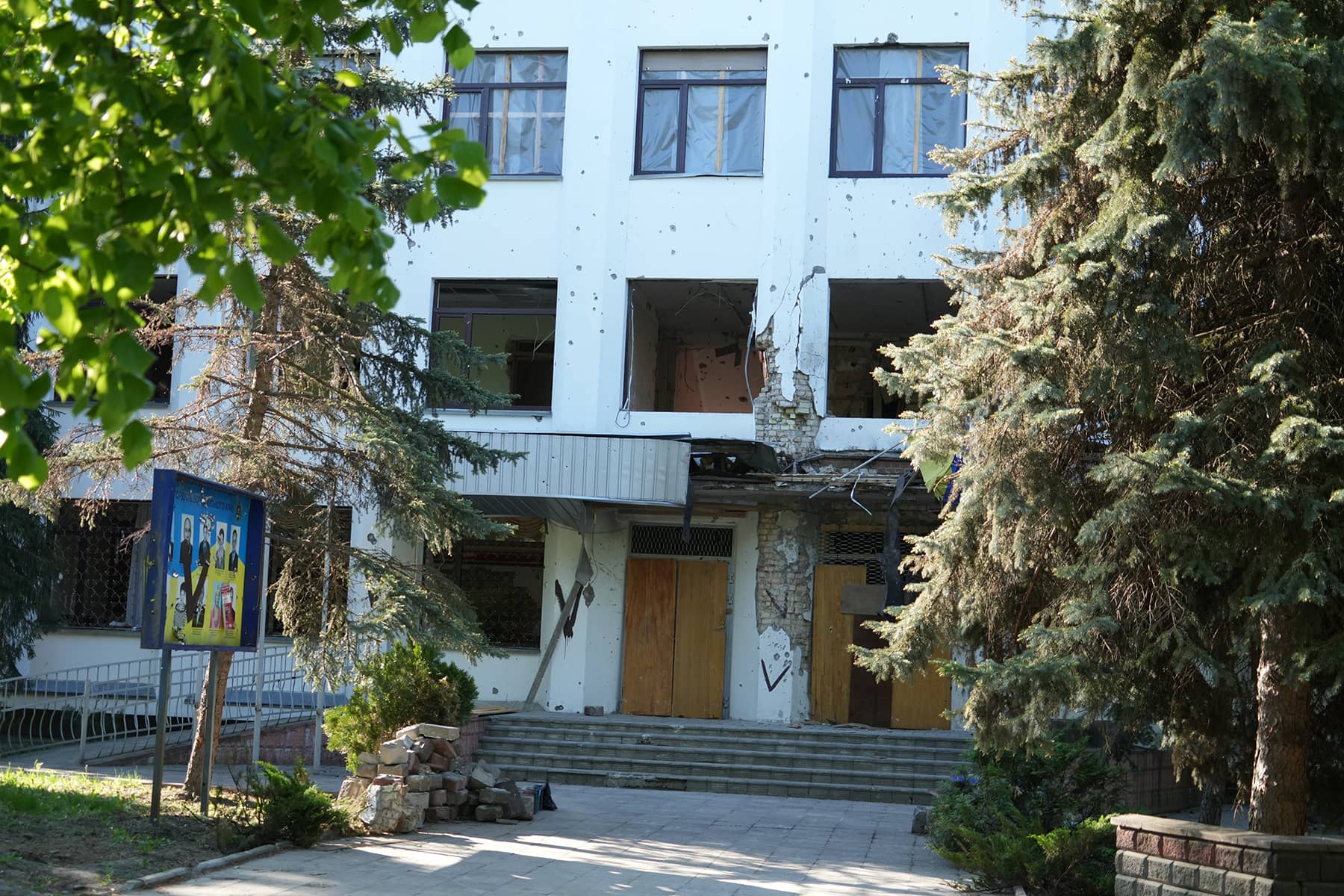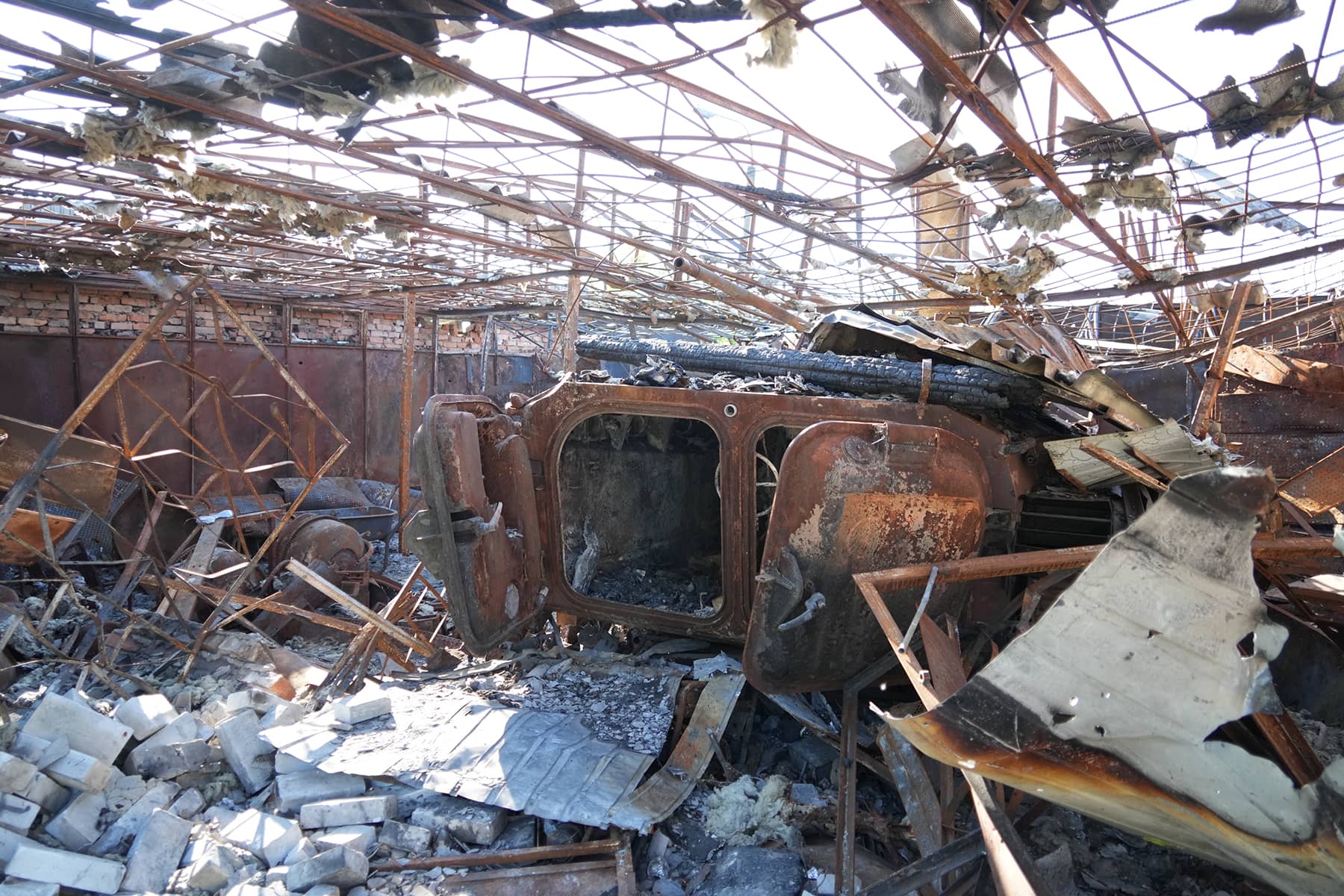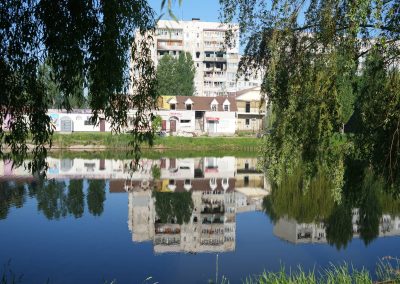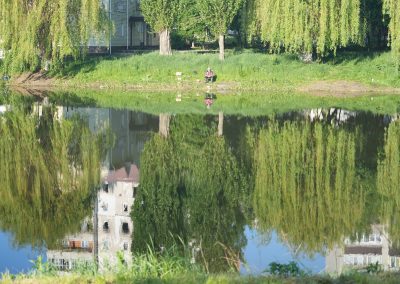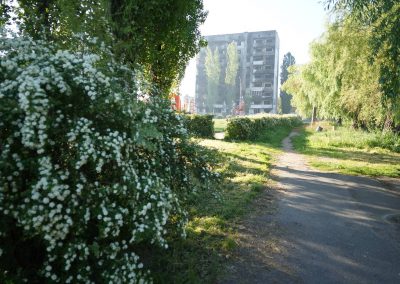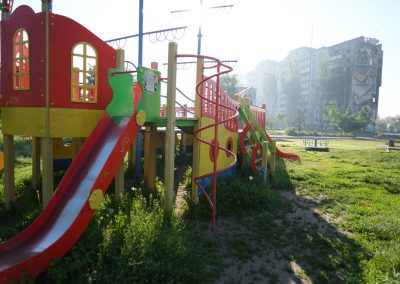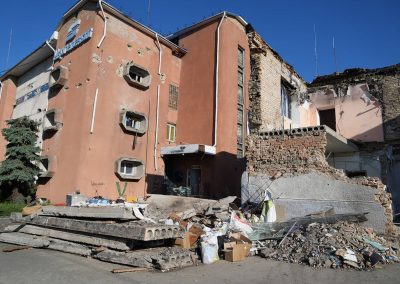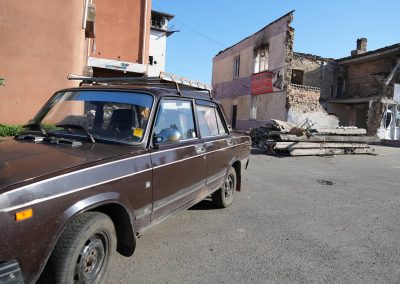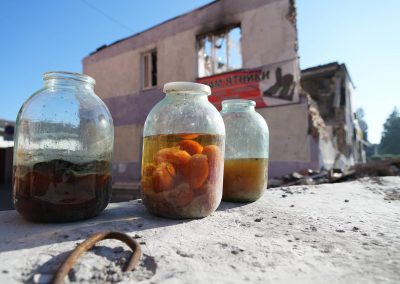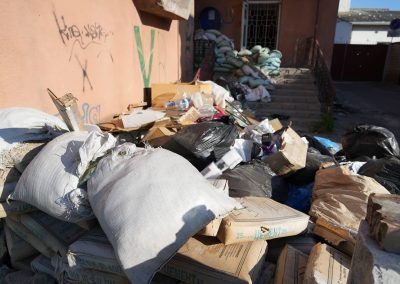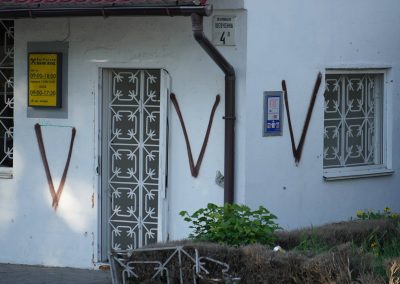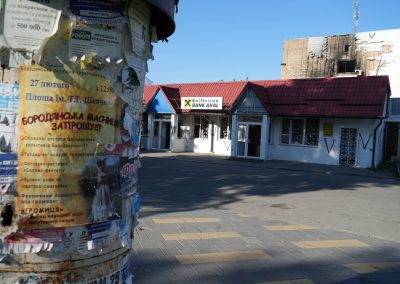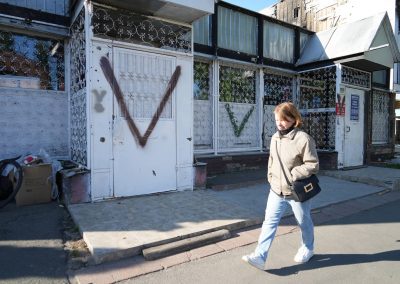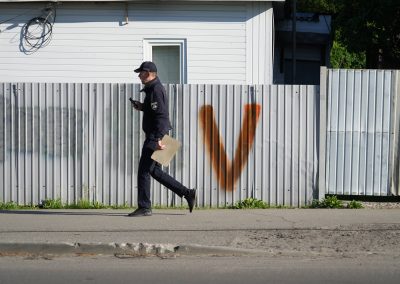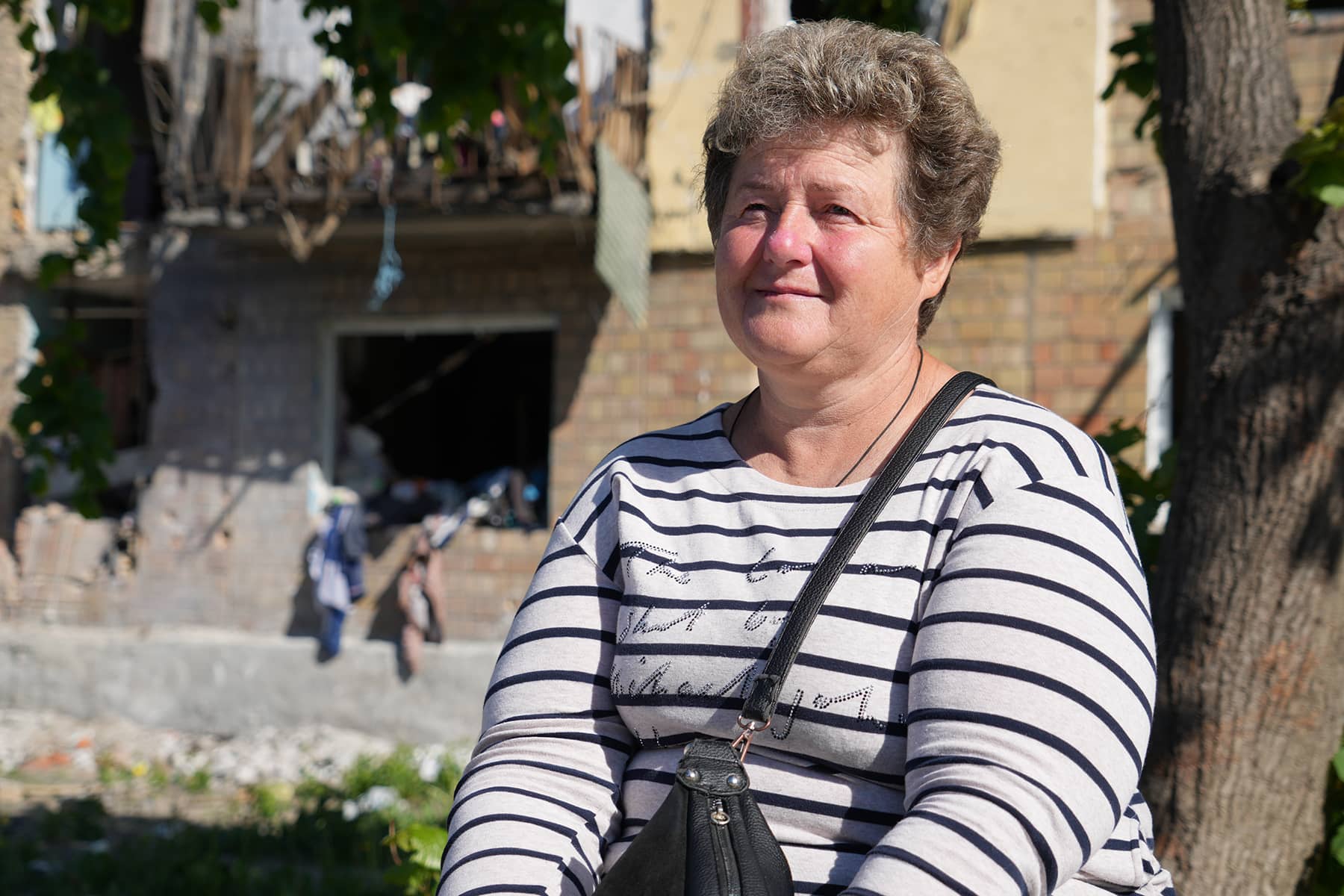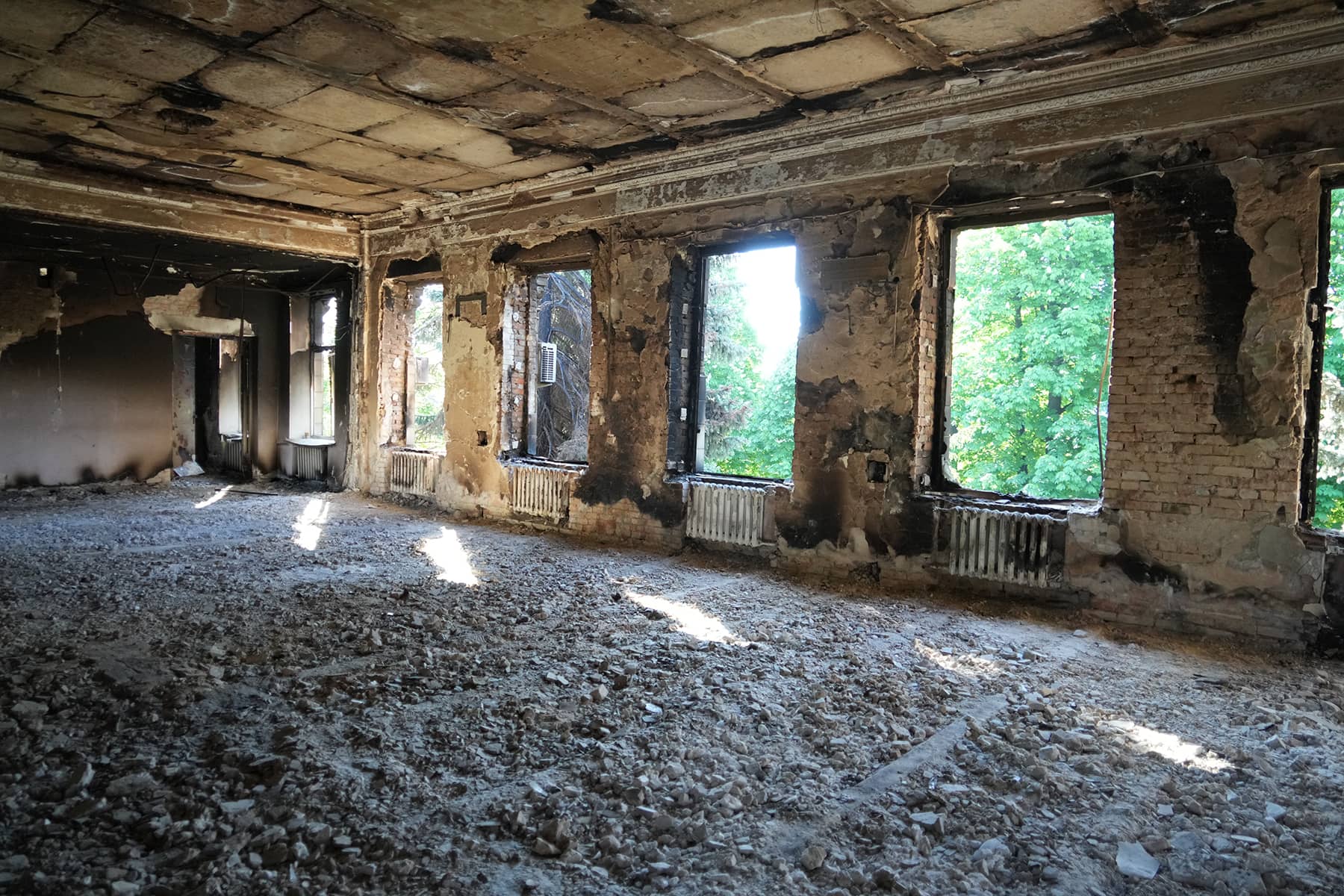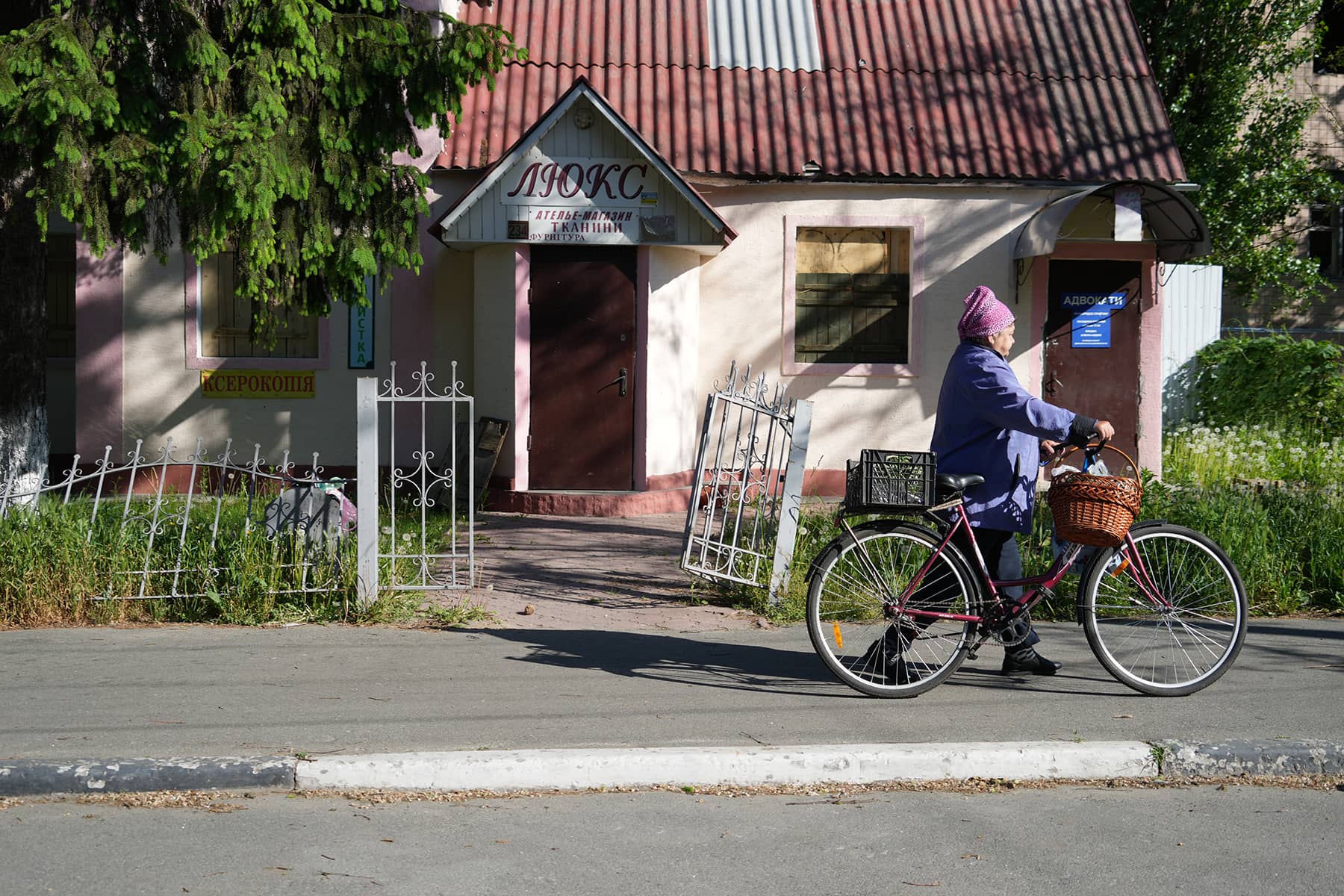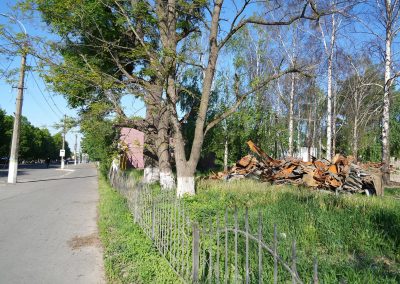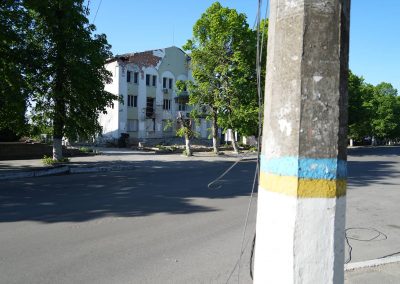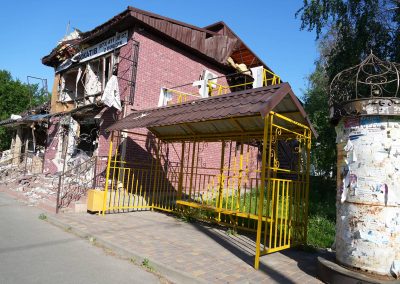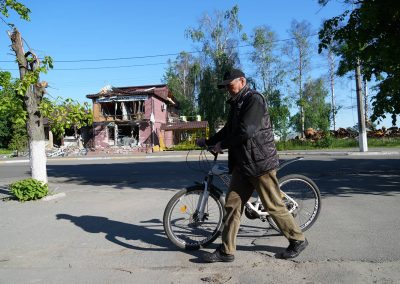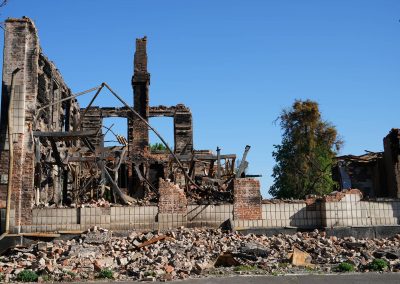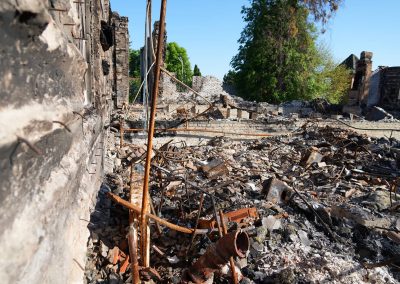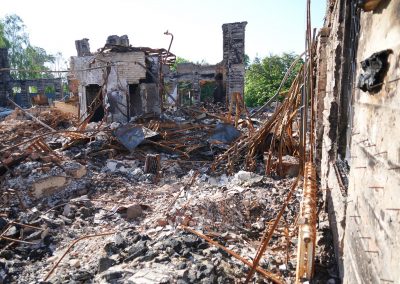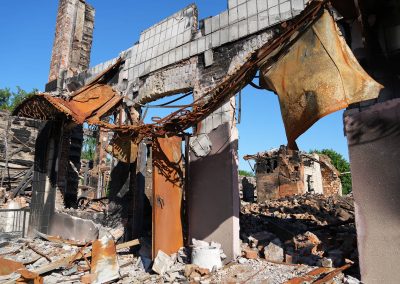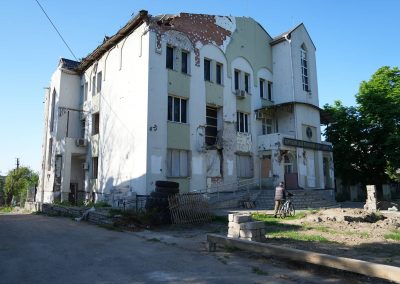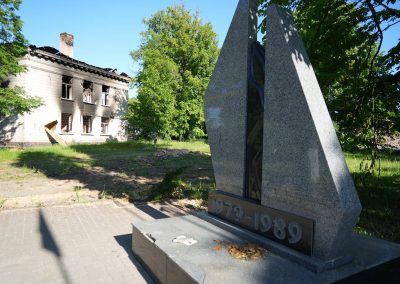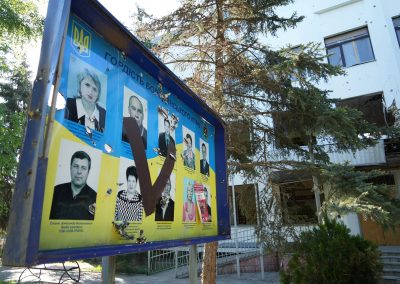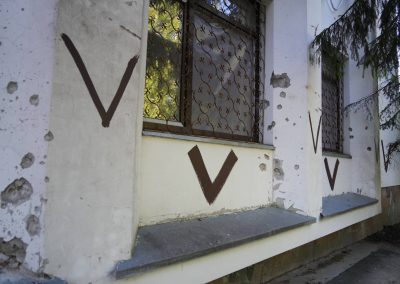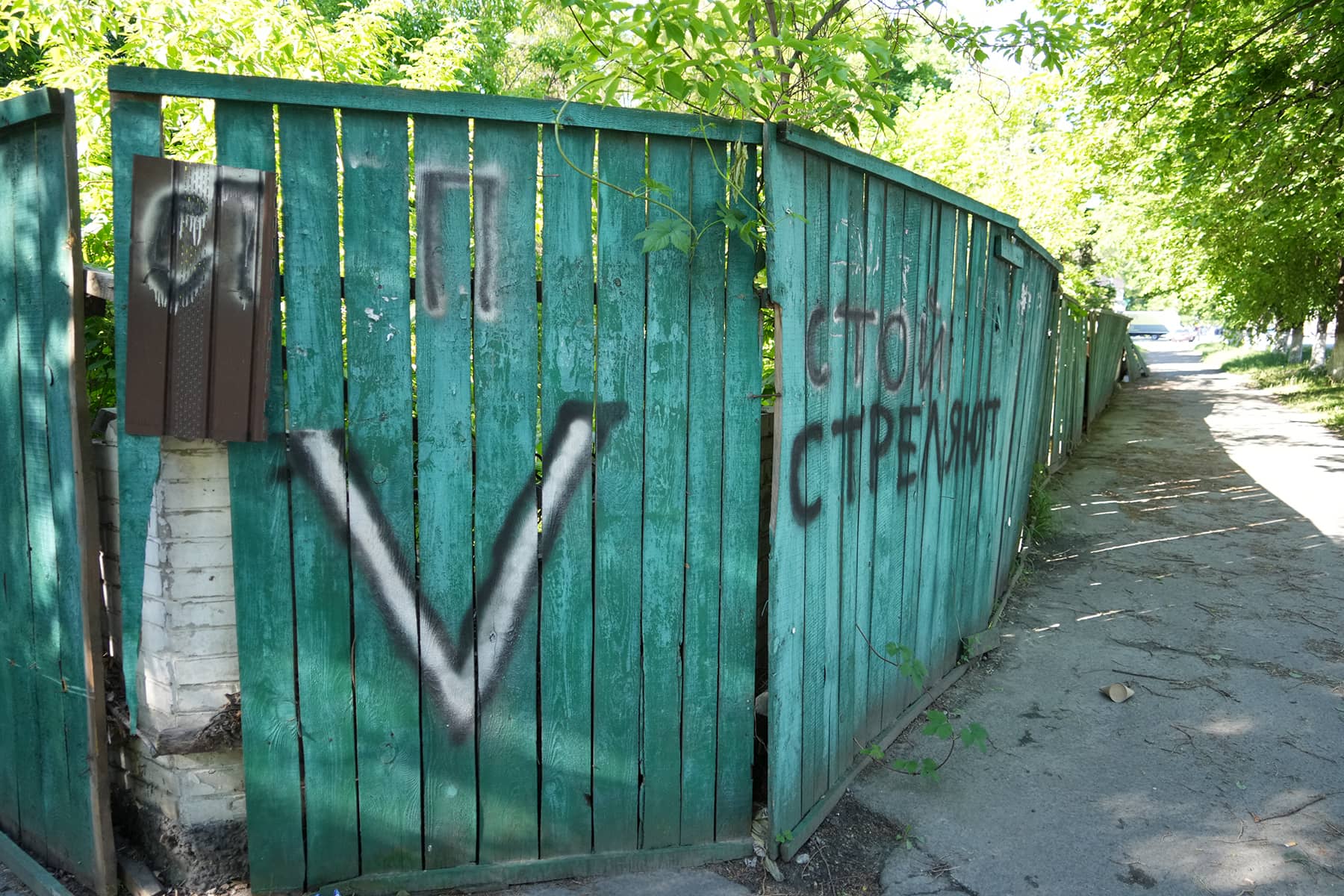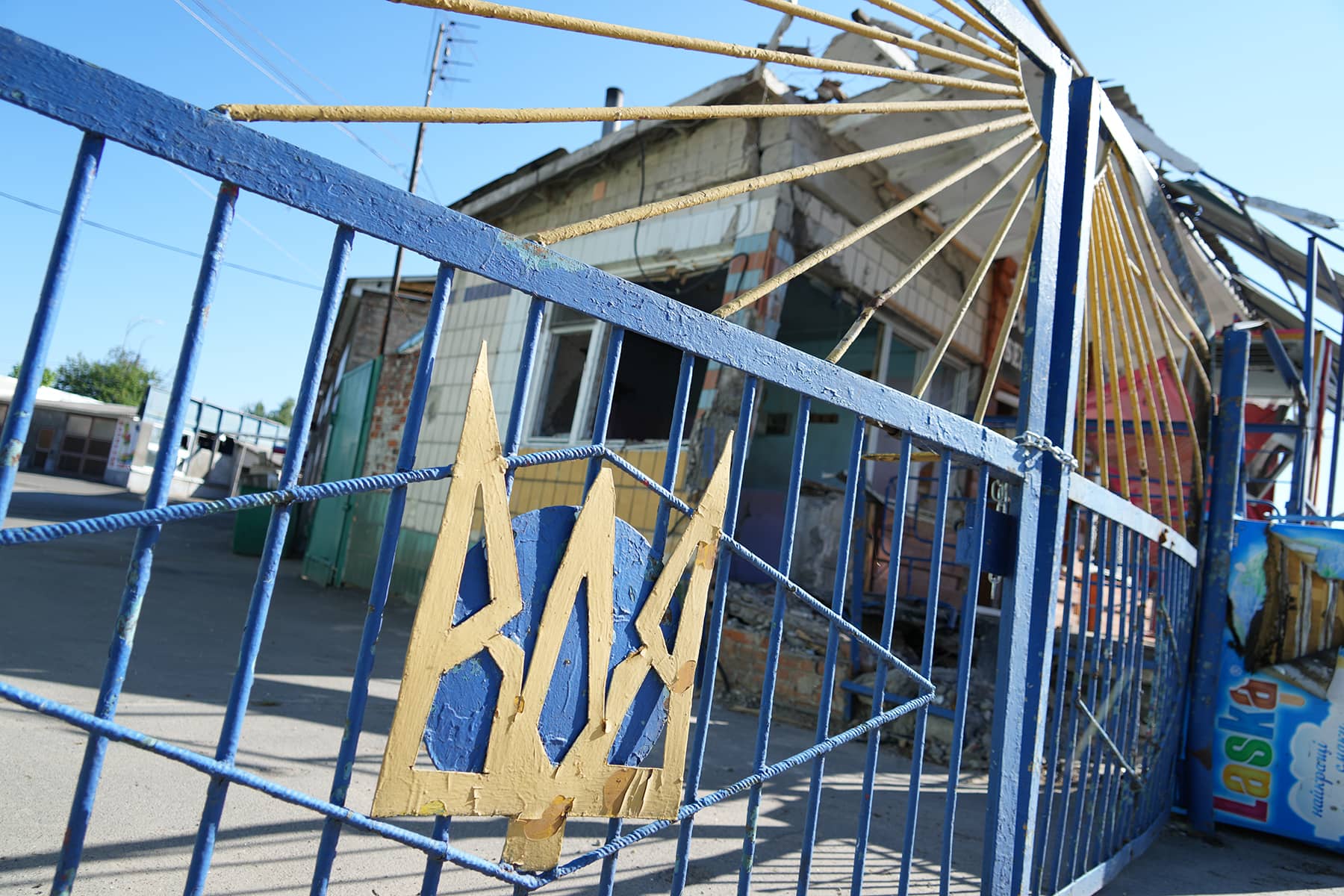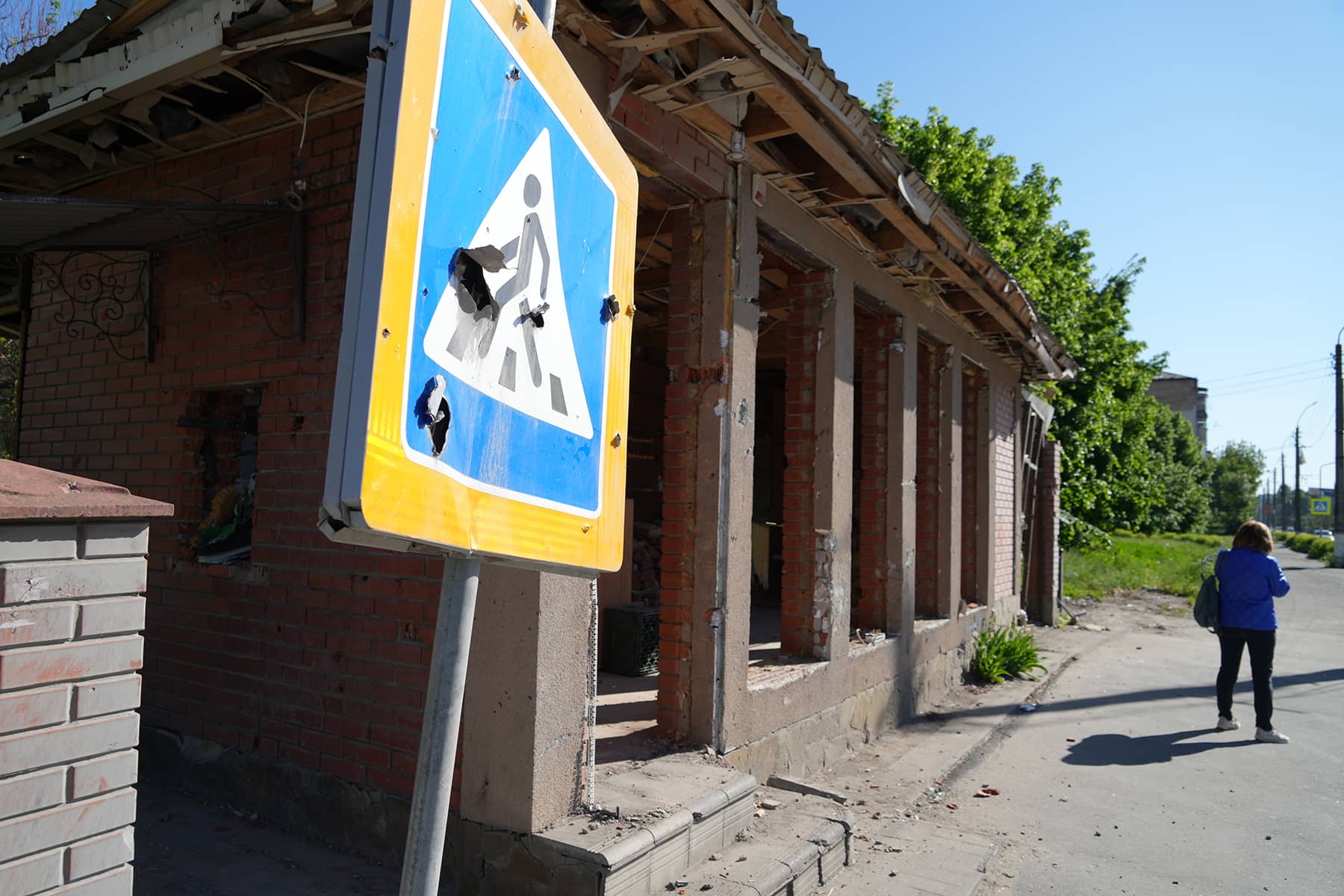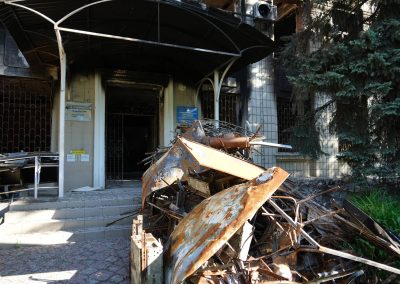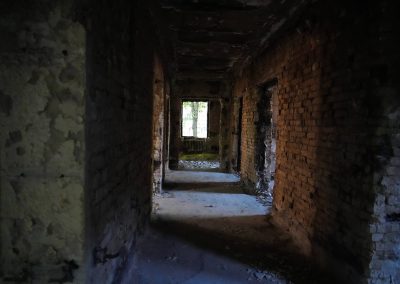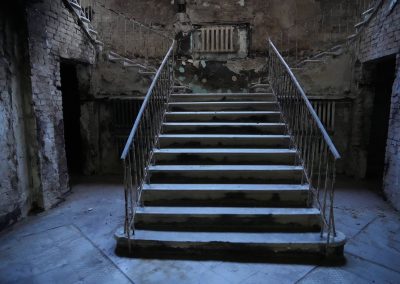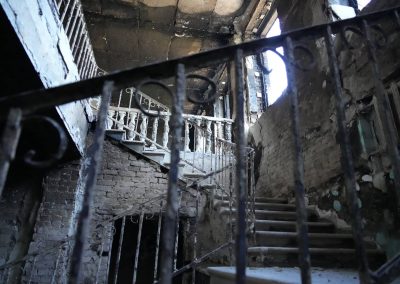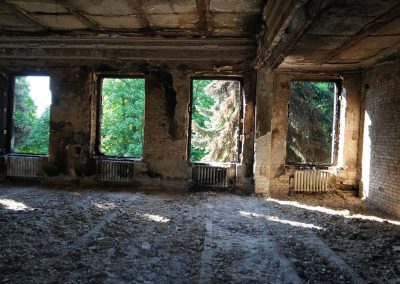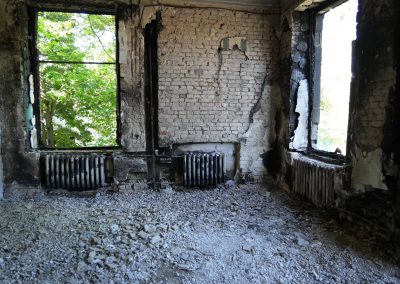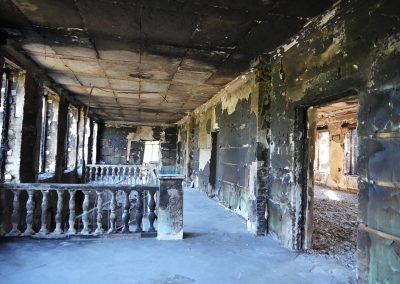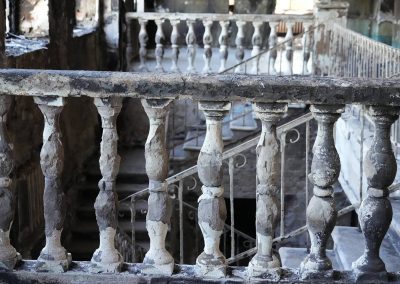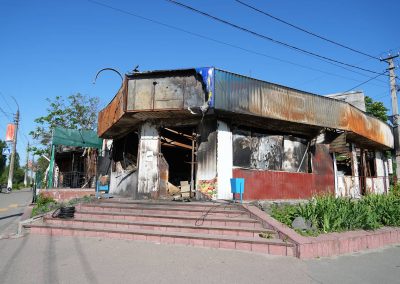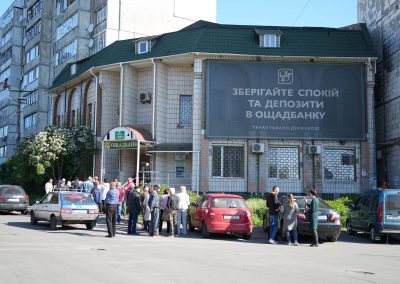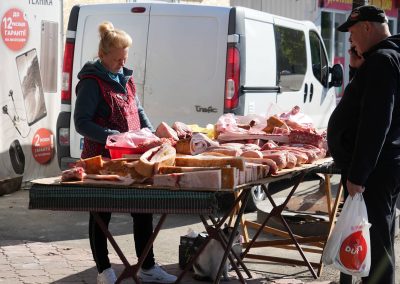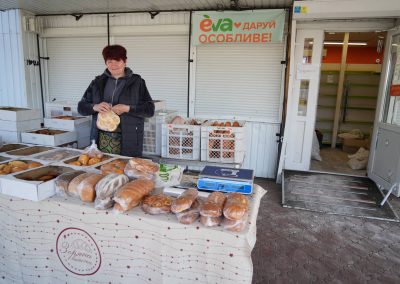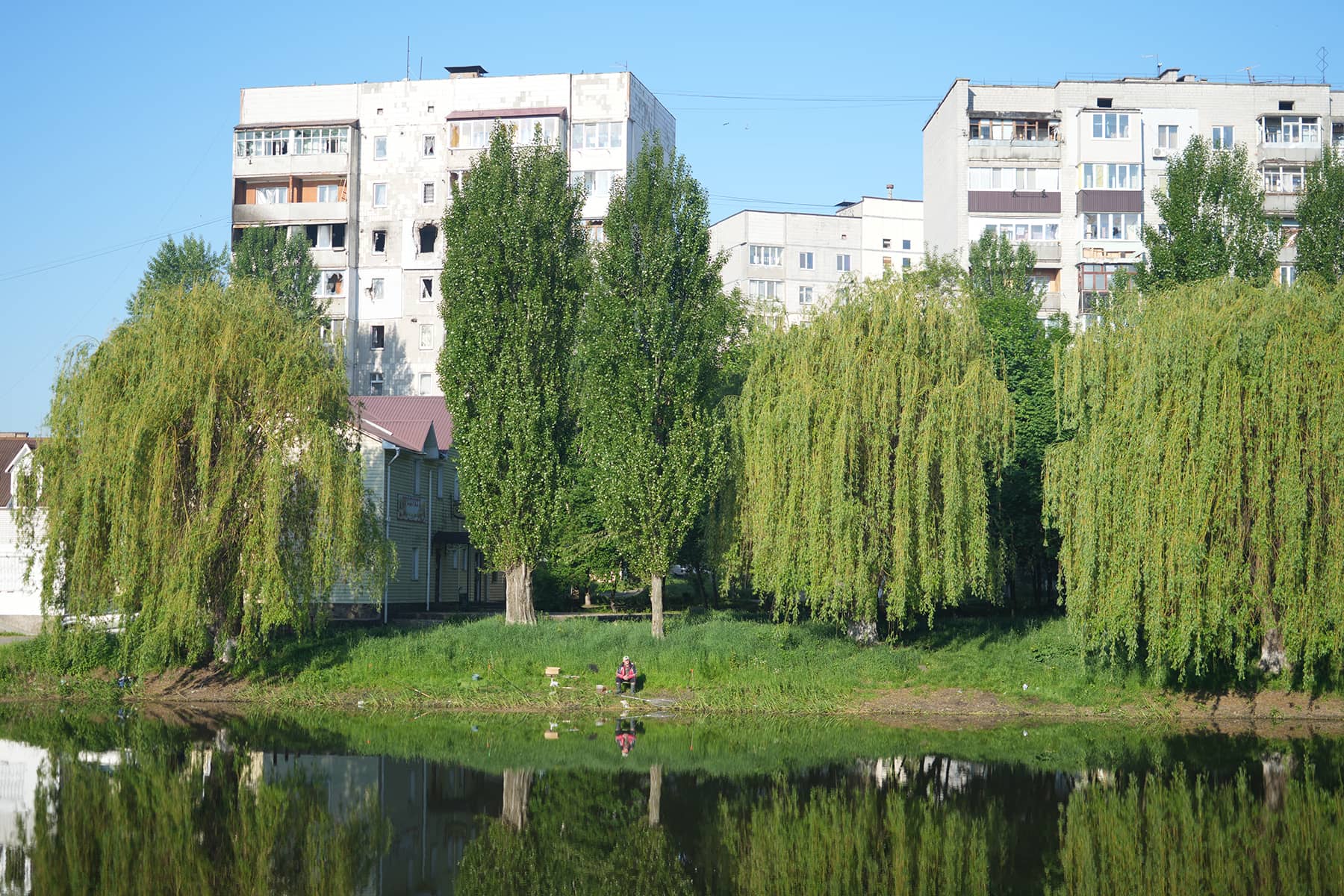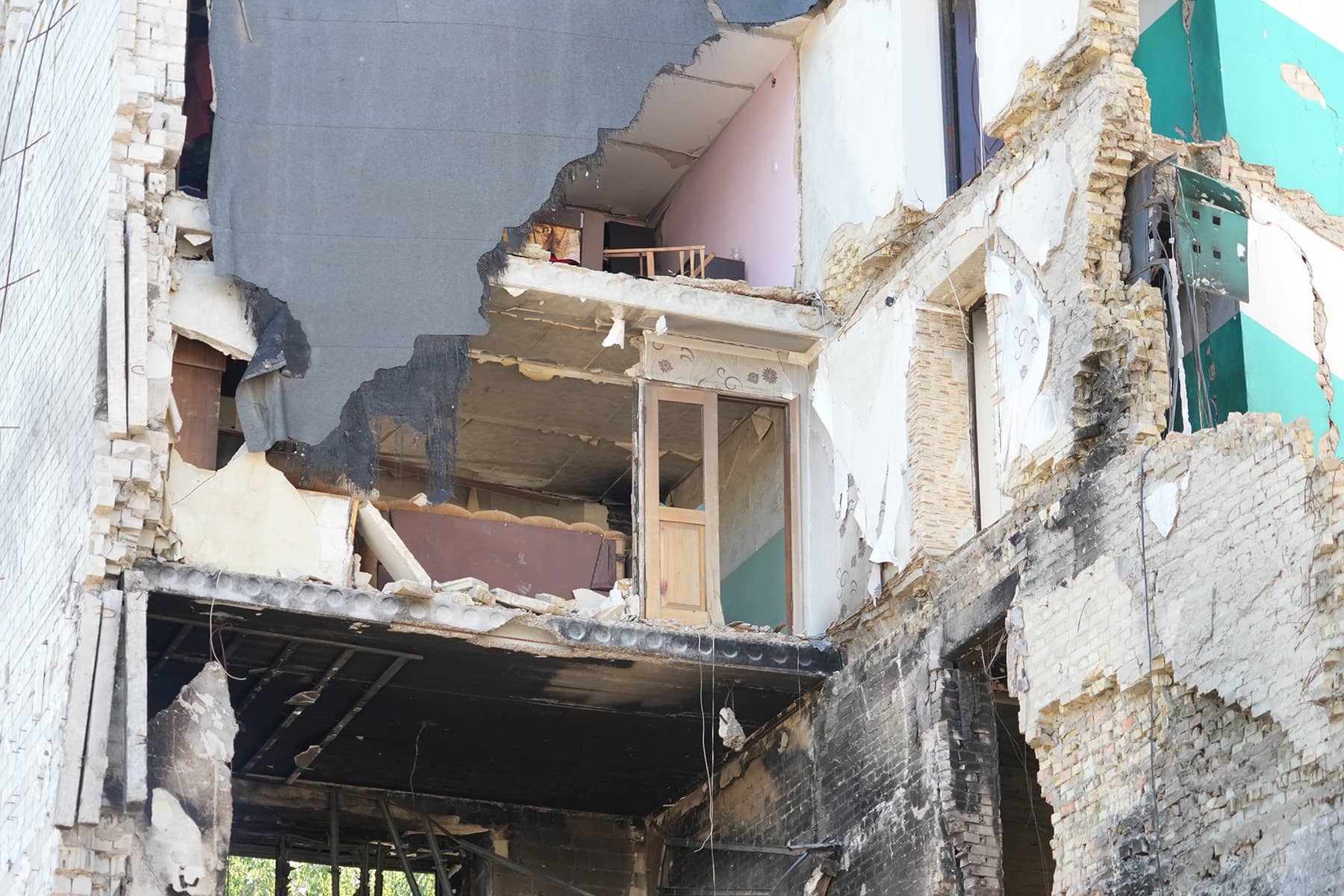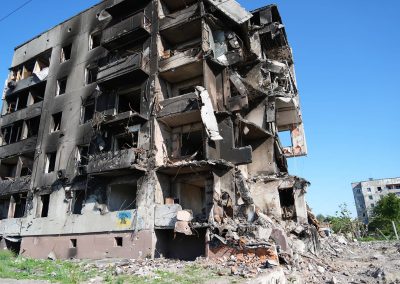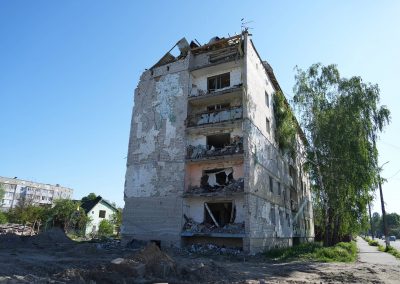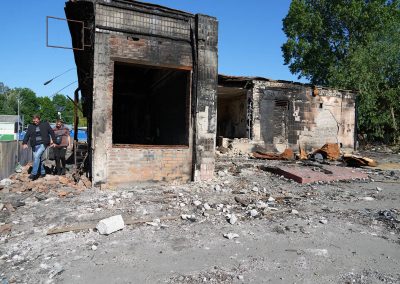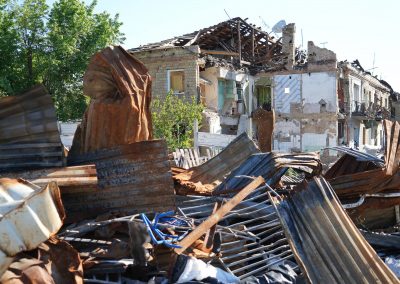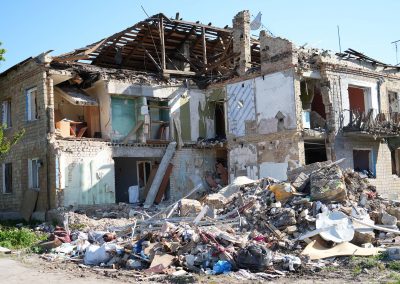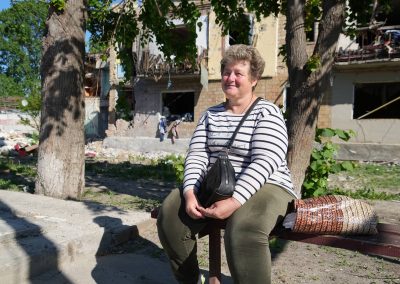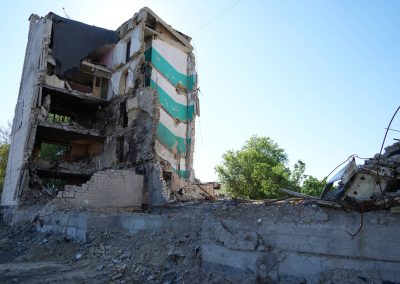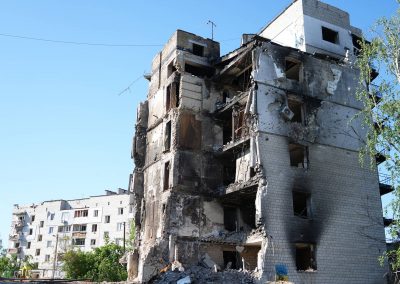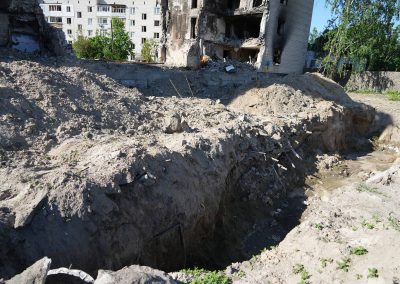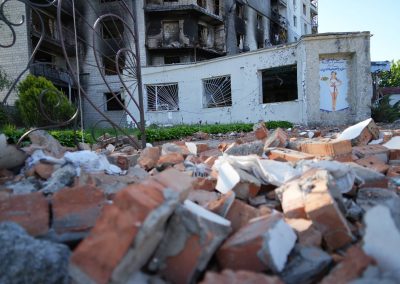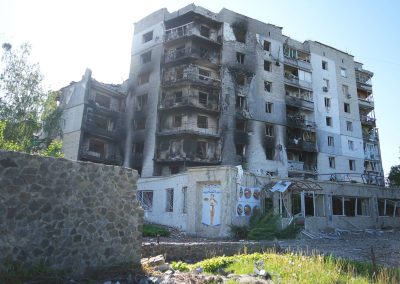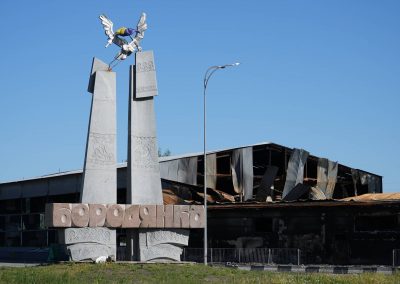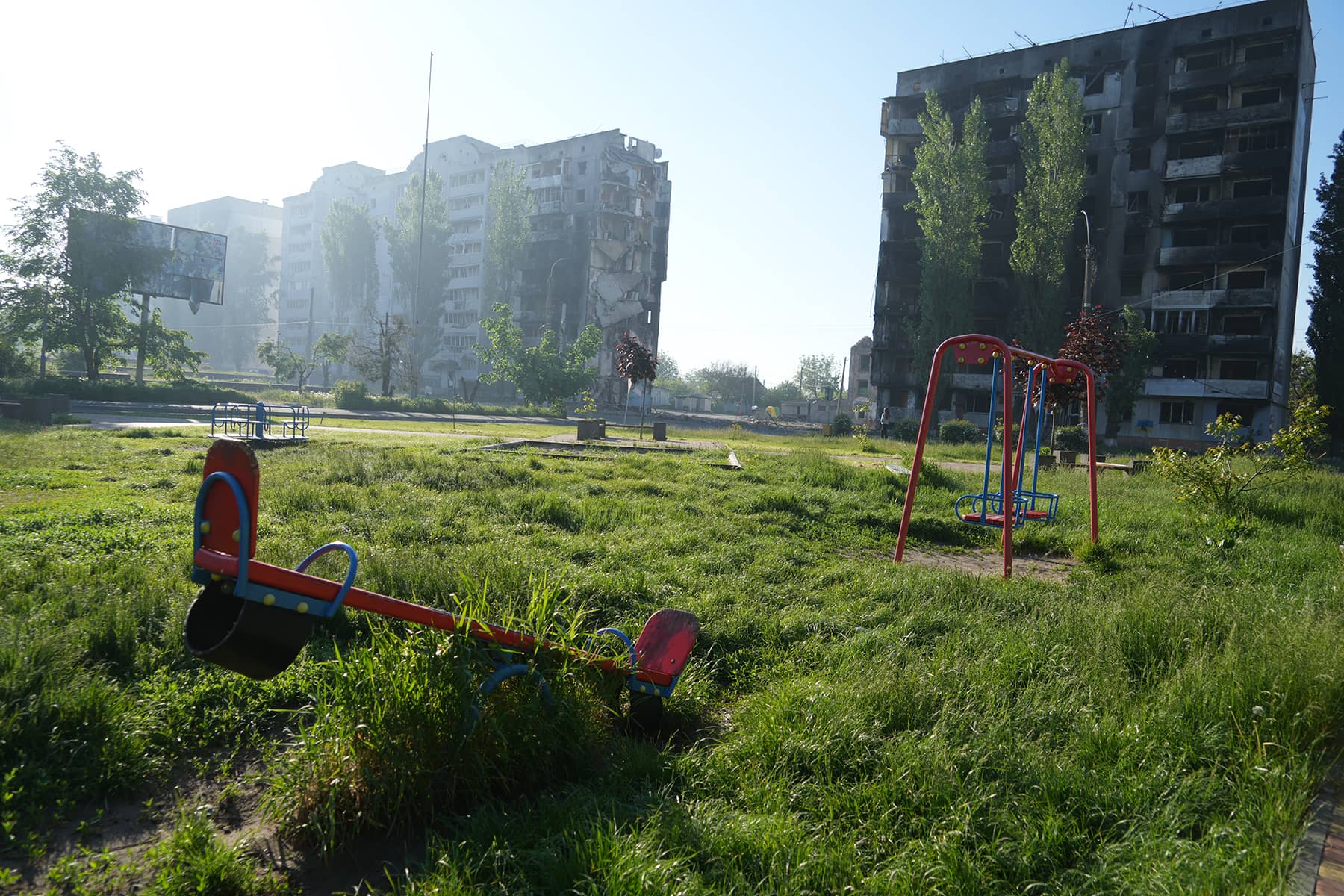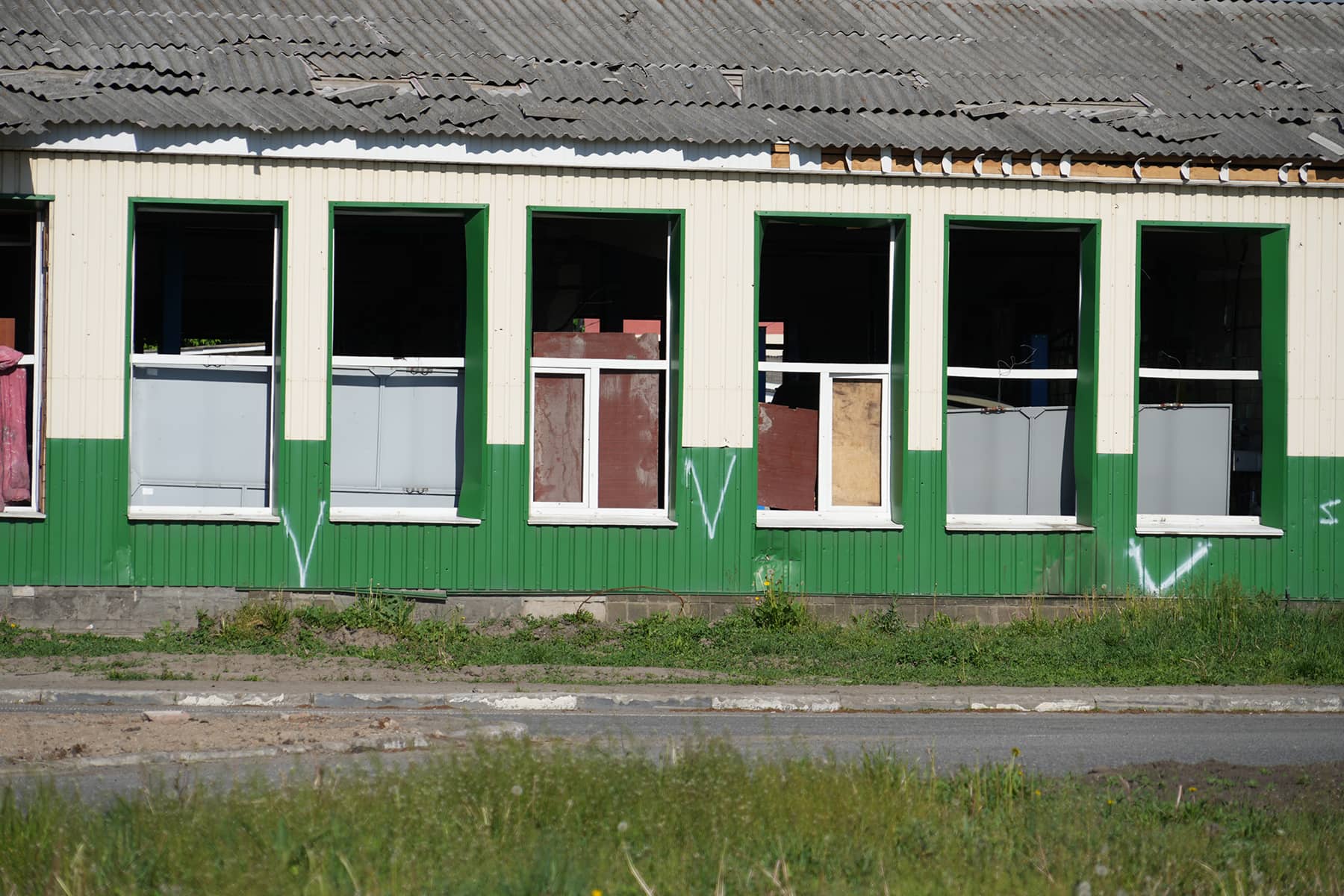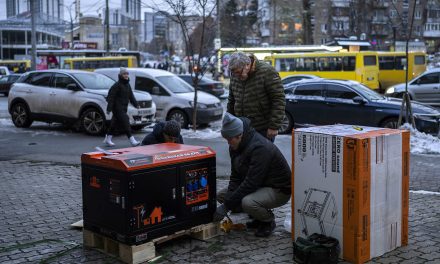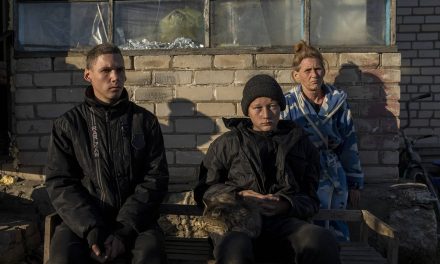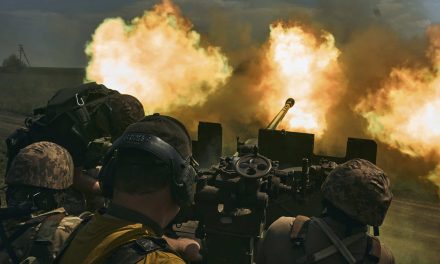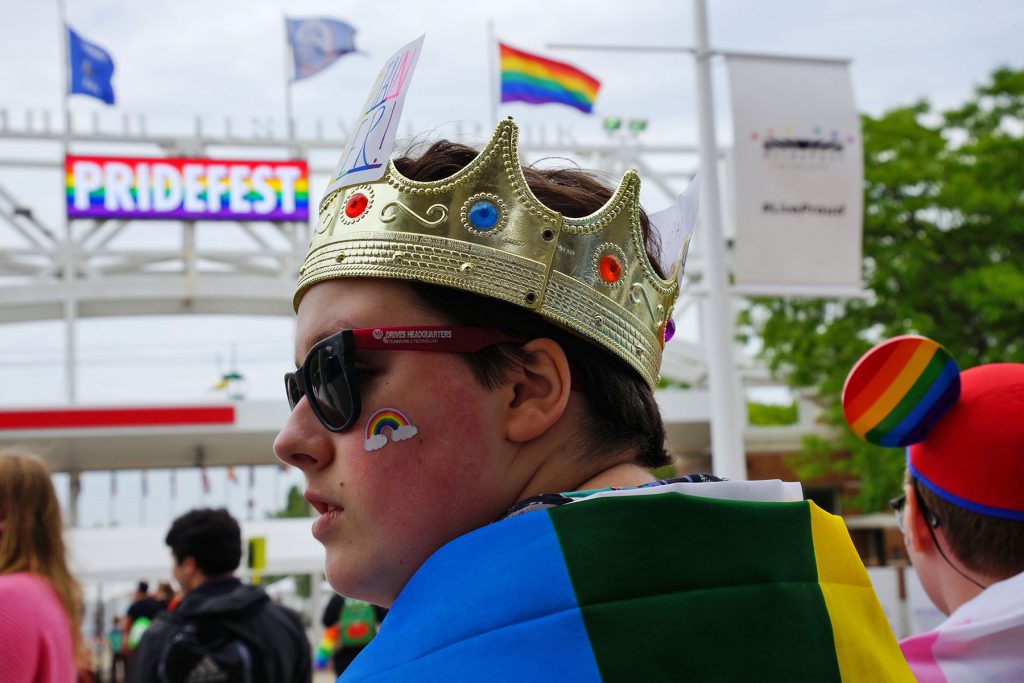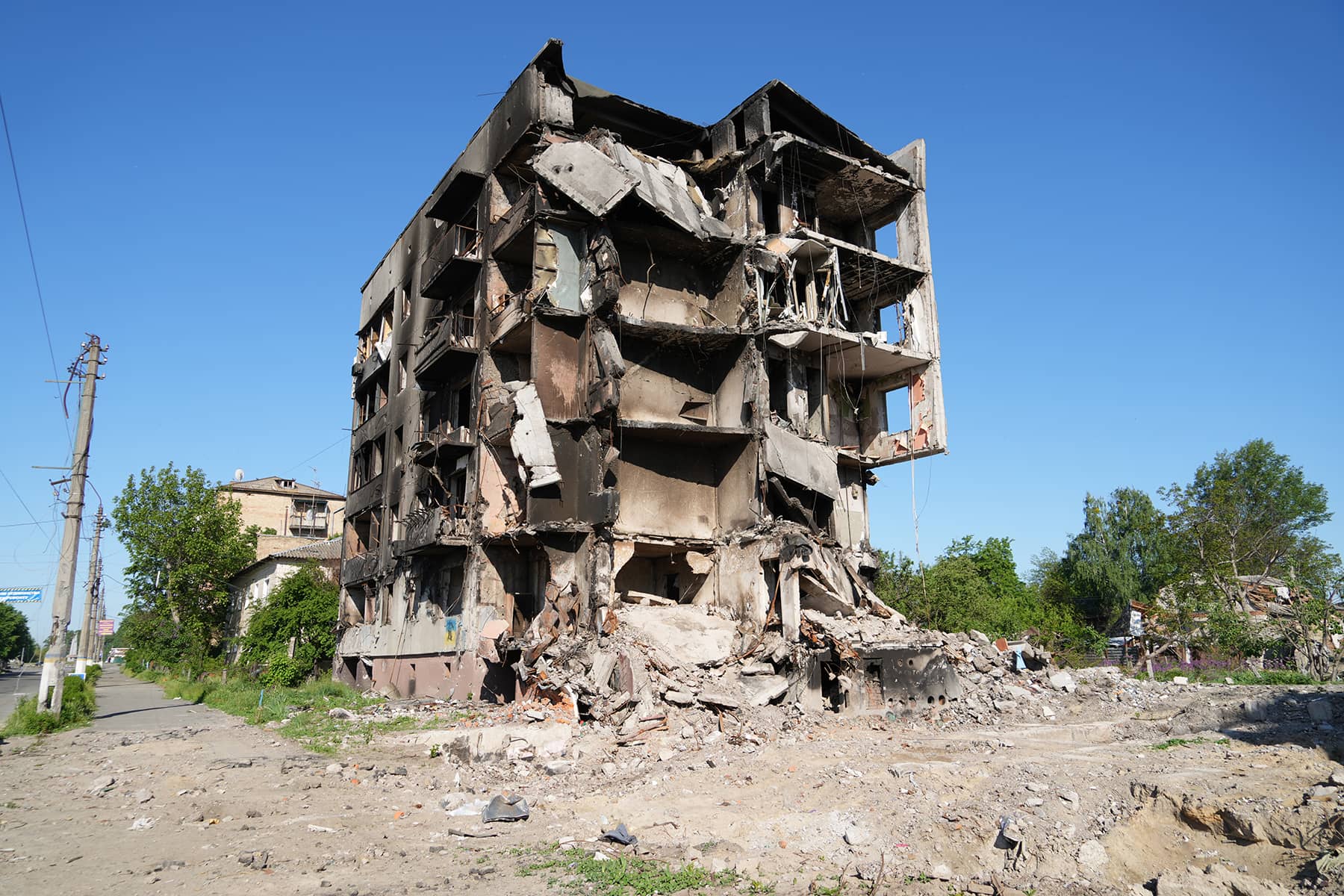
What happened in Borodyanka is considered one of the biggest tragedies in Ukraine, and was one of the places in Kyiv Oblast most impacted by Russian aggression. The city had no Ukrainian military fortifications of strategic importance, and troops simply acted out of cruelty against the unarmed civilian population.
With more than 90% of the downtown area destroyed, the city is slowly recovering after two months since its occupation by Russian forces. The damage in Borodyanka remains shocking, with scorched and shattered residential buildings standing as a testament to the invader’s brutality.
Putin’s flawed intelligence led Russian forces to believe they could use Ukraine’s highways to roll past Chernobyl and seize the capital of Kyiv within mere days. They expected to be welcomed as liberators, greeted by joyful residents with open arms. Instead, they were met with fierce defiance.
The resistance in Borodyanka surprised the Russians and forced them to change tactics. It was a preview of the war crimes that would play out in cities occupied by Russian forces. As Putin’s offensive became stuck, Ukrainian Territorial Defense forces launched guerrilla attacks on the enemy supply lines. Ukrainian forces blew up bridges which also prevented Russian advancement.
A similar strategy was deployed in Bucha and Irpin, but Borodyanka faced relentless attacks night after night. The Russians retreated on April 2, but not before they left explosive mines around the city, in places like public parks where children played.
When the Milwaukee Independent team visited Borodyanka, the scale of the damage remained overwhelming.
All along the city’s main street, government buildings were destroyed. Businesses were also graffitied by Russian troops with the Latin alphabet letter “V.” The symbol “Z” had come to represent the Russian version of Nazi German’s Swastika.
It terms of Russia’s usage, it represents the abbreviation of the romanized phrase “for victory,” while the “V” supposedly stood for “strength in truth.” Some Russian forces have also painted “Z” and “V” and “O” on their vehicles to distinguish their forces from Ukrainian troops.
An unidentified Ukrainian soldier guarding a checkpoint told our team that the most destroyed area in Borodyanka was Lenina street. When Russian tanks entered the city, they quickly focused their firepower on that corridor.
Across the street where we stood was a restaurant called “U Sasha,” which became the enemy’s headquarters.
“We were in the fields for more than two weeks. The conditions were very difficult. I did not take off my ankle boots for more than 2 weeks,” said the Ukrainian soldier. “Some of our troops were hiding in the city. They identified enemy positions and provided us with important information to guide our artillery. We destroyed a lot of enemy tanks. The road was littered with destroyed Russian vehicles.”
Because the Russians were frustrated and could not understand how the Ukrainian forces were targeting them, they began to systematically demolish high-rise buildings along the entire street.
“If they suspected that there might be a gunner in a high-rise building, they didn’t even try to find or catch him. They just dropped a five hundred kilogram bomb on the house and leveled it to the ground,” added the Ukrainian soldier.
© PHOTO NOTE: All the original editorial images published here have been posted to the Facebook page of Milwaukee Independent. That collection of photos contains the MI copyright and watermark for attribution, and may be used for private social media sharing. Do not download and share images directly from this page. mkeind.com/facebook
Series: Reports from Ukraine
- Reports from Ukraine: Traveling from Milwaukee to a country at war just to take a vacation from America
- Images from Ukraine: Latino artist travels to Irpin to paint mural inspired by "Echoes of Guernica"
- Images from Ukraine: Irpin residents welcome reissue of Russian Warship Stamp as latest sign of victory
- Stories from Ukraine: Wandering in the ruins of a shattered life after surviving Russia's invasion
- Images from Ukraine: Similar to the Alamo, martyred cities bought precious time to save a nation
- Stories from Ukraine: Tent camp offers shelter for displaced residents until Irpin can rebuild lost homes
- Images from Ukraine: Graveyards of Russian war machines show the scale of Putin's failure to seize Kyiv
- Images from Ukraine: Following the invasion convoy's 40-mile route and exploring an abandoned base
- Stories from Ukraine: Illegal weapons and proof of Russian War Crimes easily seen along streets of Irpin
- Images from Ukraine: How Irpin’s cemetery processed the staggering massacre of its local citizens
- Stories from Ukraine: Healing remains slow as Borodyanka residents recover from occupation
- Images from Ukraine: The deep scars of war remain visibly etched across the landscape of Borodyanka
- Interview with Oleksandr Markushin: Mayor of Irpin and the hero of a Hero City
- A Meeting of Sister Cities: Former and current Mayors of Irpin ask Milwaukee's business community for help
- Stories from Ukraine: Having a shared purpose helped Irpin's leaders protect the city and stop the invaders
- Stories from Ukraine: How Milwaukee helped a bakery feed hungry survivors in Bucha with fresh bread
- Stories from Ukraine: Bucha resident recalls how Russians turned neighborhood into a street of death
- Stories from Ukraine: How a mass grave of executions overshadowed accountability from Bucha’s leadership
- Images from Ukraine: Putin’s attack on Babyn Yar is a painful reminder of the broken vow of “Never Again”
- Images from Ukraine: An unexpected encounter with Jewish history and the bloody legacy of persecution
- Images from Ukraine: Listening to timeless voices of ethnic heritage etched in stone at Lychakiv Cemetery
- Images from Ukraine: The experience of attending a military funeral in Kyiv while children died in Uvalde
- Images from Ukraine: Stepping out of the fog of war to see the beauty of faith in ancient places of worship
- Images from Ukraine: The cities of Kyiv and Lviv were divided by history but remain united in identity
- Stories from Ukraine: Anya Nakonechna shares why the Lviv Opera is a symbol of her nation’s culture
- Images from Ukraine: A folk village where visitors can experience the life of past generations
- Images from Ukraine: Signs of renewal sprout from under Irpin’s rubble as city looks to the future
Lее Mаtz
Oleh Pinta and Halyna Salapata
Lее Mаtz
Milwaukee Independent editorial team for this special series: (UKRAINE) Lee Matz, photojournalist; Oleh Pinta, translator / reporter; Yaroslav Zdyrko, security / videographer; (MILWAUKEE) Halyna Salapata, logistics / translations.
Milwaukee Independent has reported on the situation in Ukraine since it was invaded on February 24. Coverage originally began with reactions and rallies from the local Ukrainian American community, and relationships with Milwaukee’s sister city of Irpin. Through partnerships and good journalism, sources were developed that enabled Milwaukee Independent to publish developments about the unprovoked war in realtime. In late May, a team from Milwaukee Independent spent nearly two weeks on the ground in Ukraine. The award-winning daily news magazine was the first and, at the time, only media organization to send staff into the country since the war began.
Reports from Ukraine: An extensive news series by Milwaukee Independent from a country at war

